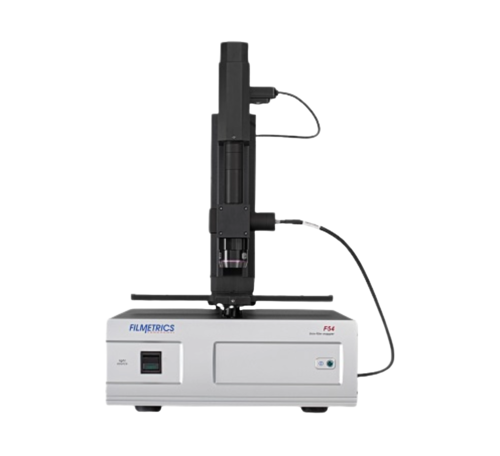High-Performance Optical Fibre Diameter Analyser for Critical Applications
High-Performance Optical Fibre Diameter Analyser for Critical Applications
Blog Article
Maximize Your Fiber Optic Performance: Understanding Optical Fiber Size Analyser Innovation
The performance of fiber optic systems is seriously affected by the precision of their diameter, an element typically overlooked in the search of optimum signal stability. Recognizing the technology behind optical fiber diameter analysers exposes the detailed balance between dimension precision and production top quality.
Significance of Optical Fiber Diameter
The size of optical fibre plays an essential duty in determining the efficiency and performance of interaction systems. It affects numerous crucial specifications, consisting of the setting of light breeding, depletion, and data transfer capacity. Larger sizes commonly permit multiple light modes, facilitating higher information transmission prices. Alternatively, smaller sizes often tend to support fewer settings, which can enhance signal quality and decrease crosstalk.

Furthermore, recognizing the diameter's implications can bring about set you back financial savings by minimizing the requirement for signal amplification and repeaters in considerable networks (optical fibre diameter analyser). To conclude, the relevance of optical fibre diameter can not be overstated, as it straight influences the overall efficiency and integrity of contemporary communication systems

Exactly How Size Influences Signal Quality
Signal top quality in optical fiber systems hinges substantially on the size of the fibre. The size affects several crucial criteria, including depletion, data transfer, and modal diffusion. A smaller size can bring about higher depletion rates, resulting in signal loss as light journeys through the fiber. This attenuation can compromise the integrity of the transmitted data, resulting in a decline in signal top quality, particularly over fars away.
Alternatively, bigger diameters normally allow for boosted light capture and decreased modal diffusion, enhancing signal clearness. In multimode fibers, a larger core diameter can sustain multiple light modes, however it might also introduce intermodal dispersion, which can weaken signal quality. Picking the optimal fibre diameter is essential for achieving the preferred efficiency in specific applications.
Furthermore, the interaction in between the fibre diameter and the wavelength of the light used plays an essential duty in establishing the efficient transmission distance and overall signal integrity. As such, understanding just how fibre size influences signal top quality is important for network designers and engineers making every effort to maximize optical fiber systems for trusted, high-speed information transmission.
Overview of Diameter Analyser Technology
In many optical fibre manufacturing procedures, exact dimension of fibre size is necessary for guaranteeing regular efficiency and top quality (optical fibre diameter analyser). Diameter analysers are sophisticated tools developed to assess the physical dimensions of optical fibres with high precision. They utilize advanced optical and laser modern technologies to determine the diameter, ovality, and concentricity of the fiber, hence providing essential information for top quality control
These analysers can run in-line during the production process or as component of off-line testing protocols. In-line systems allow real-time monitoring, permitting makers to adjust parameters instantly, therefore preserving optimum production conditions. Off-line analysers, on the various other hand, give comprehensive examinations of batches, making sure that any inconsistencies from specified resistances are identified and resolved.
Size analysers substantially add to the decrease of issues in optical fibres, boosting total item dependability. By consistently determining essential specifications, these modern technologies help with compliance with market criteria and specs. As the demand for high-performance optical fibers remains to increase, the duty of size analysers page becomes significantly essential in attaining the preferred quality and efficiency standards in fiber optic systems.
Key Functions of Fibre Size Analysers
Although various designs of fibre size analysers exist, they frequently share a number of vital functions that boost their capability and integrity. One of one of the most considerable attributes is high-resolution dimension capabilities, which ensure accurate diameter readings, vital for keeping quality assurance in fiber manufacturing. In addition, numerous analysers include advanced optical sensing units created to identify minute variants in fiber size, therefore providing very useful data for process optimization.
One more important feature is real-time surveillance, enabling operators to get instant feedback on fiber diameter throughout the manufacturing process (optical fibre diameter analyser). This ability assists in fast modifications and minimizes the probability of flaws. Lots of analysers also come equipped with easy to use interfaces, making it possible for operators to quickly browse with settings and data outcomes
Furthermore, robust information storage and analysis capabilities are essential for tracking historical efficiency patterns and ensuring compliance with industry requirements. Some designs even offer connection options for assimilation right into existing production control systems, boosting general functional effectiveness. Mobile and compact layouts permit for flexible deployment why not find out more within production environments, making sure that quality assurance processes are smooth and efficient. These attributes collectively add to the efficiency of fibre diameter analysers in enhancing fiber optic efficiency.
Ideal Practices for Fiber Optimization

First, routine calibration of optical fiber size Check Out Your URL analysers is crucial. This ensures precise dimensions and minimizes possible disparities that might influence efficiency. Next off, keeping a clean workplace is crucial; dirt and pollutants can cause signal deterioration.
Furthermore, it is essential to pick fibres that meet particular application demands. This entails evaluating factors such as attenuation, data transfer, and ecological problems. Appropriate installment strategies should also be adhered to, including preventing sharp bends and extreme tension, which can jeopardize fibre stability.
Moreover, utilizing advanced tracking systems can assist in real-time efficiency analyses, enabling punctual recognition of issues. Routine screening and upkeep should be carried out to make certain that fibers remain within ideal functional parameters.
Lastly, training workers on the current fibre optimization technologies and approaches will certainly improve their ability to execute effective methods. By following these best practices, organizations can substantially boost the performance and lifespan of their optical fiber systems, guaranteeing efficient communication and data transfer.
Final Thought
In verdict, the combination of optical fiber size analyser innovation is important for taking full advantage of fibre optic performance. By making certain specific dimensions of fibre measurements, these analysers substantially enhance signal high quality and lower losses during information transmission.
Signal top quality in optical fiber systems pivots considerably on the size of the fibre.In several optical fiber manufacturing procedures, precise dimension of fibre diameter is crucial for guaranteeing regular efficiency and top quality. As the demand for high-performance optical fibers proceeds to increase, the function of size analysers comes to be significantly vital in attaining the desired top quality and performance standards in fibre optic systems.
These features collectively contribute to the effectiveness of fibre diameter analysers in enhancing fibre optic efficiency.
In final thought, the assimilation of optical fiber diameter analyser technology is important for making the most of fibre optic efficiency.
Report this page